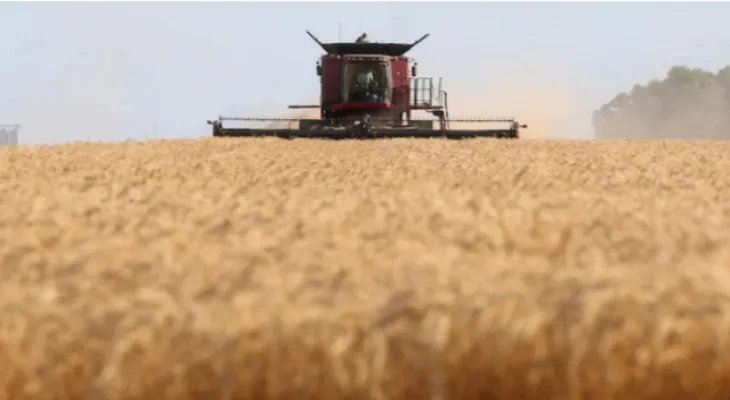Search here
Newspaper
Search here

Arab Canada News
News

Published: December 7, 2023
Due to drought, wheat production this year in Alberta province decreased by 19.6% compared to last year, according to the Canadian Statistics Agency.
Farmers in the central and southern parts of the province were particularly affected due to low rainfall, as explained by the Canadian Ministry of Agriculture and Agri-Food.
On the other hand, farms near Edmonton, the provincial capital, were less affected this year. Rainfall was more favorable, approaching the average during the wheat growing period.
A tough year...
Stephen Vanderwalc, a farmer living near Fort McLeod, about 150 kilometers south of Calgary, the largest city in the province, said the weather conditions this year are just the latest severe blow to agricultural producers in his area, who have suffered from drought and poor crops in six of the past seven years.
Vanderwalc, who also serves as vice president of the Wheat Growers Association, noted that his hard wheat crop this year, mainly used for making pasta, such as macaroni, was less than half the yield he expected.
The Canadian Statistics Agency also indicated that other areas of the Canadian Prairies were also affected by drought, leading to a 7% decrease in total wheat production in Canada in 2023.
The Canadian Prairies (Les Prairies canadiennes) are known as three western provinces of the country starting from the east: Manitoba, Saskatchewan, and Alberta. These three provinces are inland and non-coastal, and agriculture and livestock farming are considered pillars of their economy.
The impact on the food basket...
Professor Stewart Smith, professor of agricultural and resource economics at the University of Saskatchewan, said that the decrease in wheat production may contribute to rising prices in grocery stores.
However, when it comes to food products made from wheat, the story is not the same all along. "It really depends on where the crop is grown," Smith said.
It should be noted that 2021 was a very difficult year for the wheat crop in Canada due to widespread drought that caused a 38.5% decrease in total production. In Alberta, this decrease reached 43%.
This decline in production led to an increase in the cost of products sold in food stores.
Data from the Canadian Statistics Agency also showed that the average price of pasta jumped by 25% between August 2021 and August 2022, before the harvest resumed.
During the same period, the average price of white bread rose by 14%.
However, lower crop yields are not the only factor leading to higher food prices. Costs related to transportation, manufacturing, and packaging increase consumer bills.
Agricultural and production conditions in other countries also contribute to the complex picture of the global wheat price.
Comments